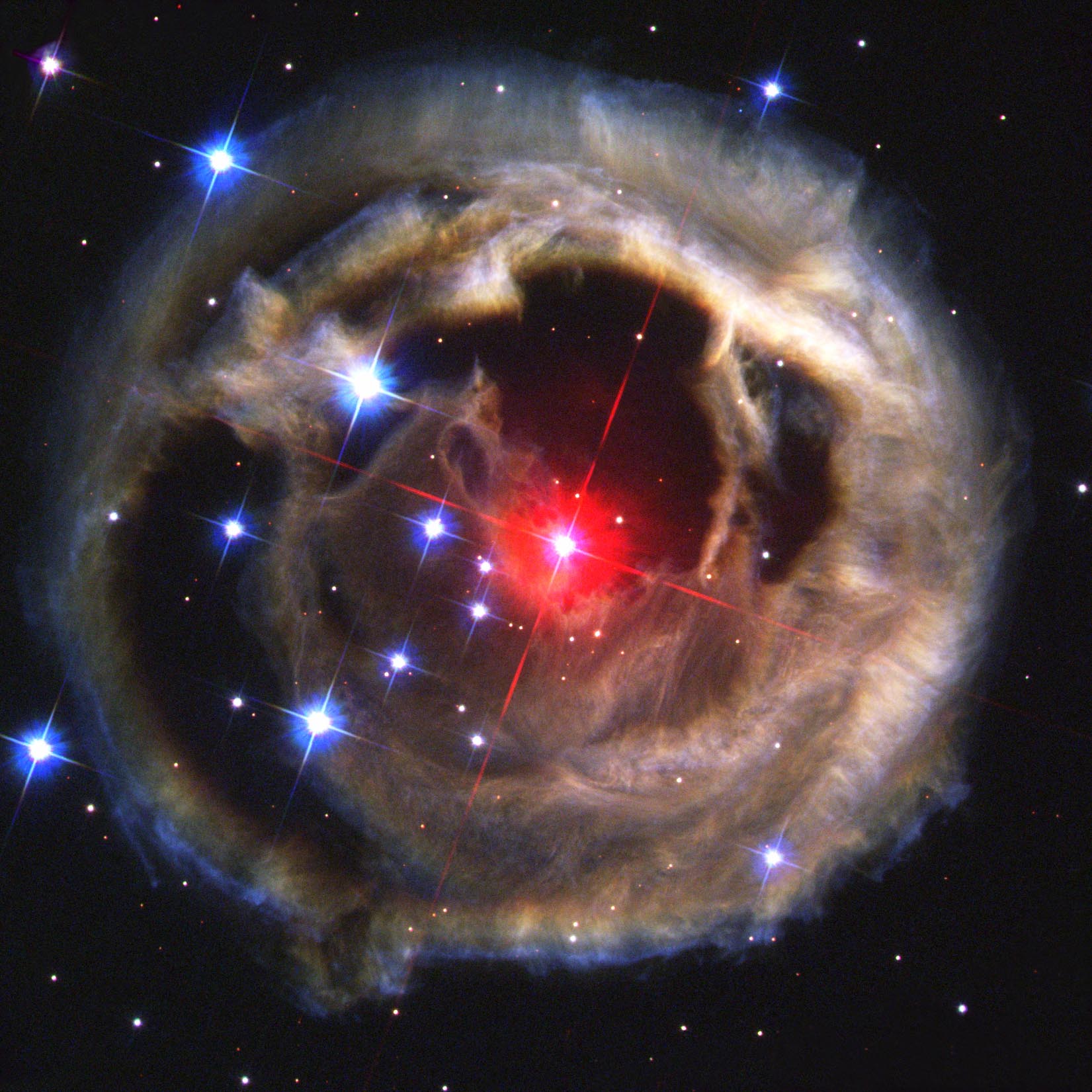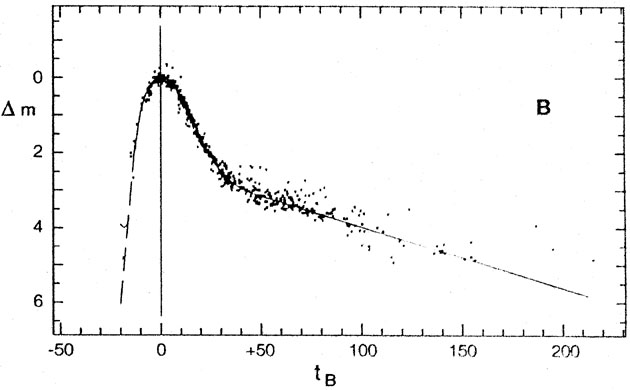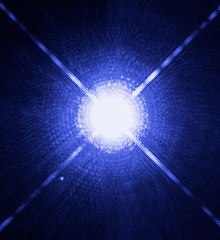Light Echo Geometry
So, the biggest question is how we get meaningful information from a light echo that we have detected. In some cases, it's not necessarily possible, but if an image of the light echo is taken that has sufficient angular resolution to make out the ring, a wealth of information can be obtained. Take a light echo that is observed to have a radius of x pixels.
where t is the time elapsed between the supernova being at peak magnitude and the measurement being taken. Using this and our previous relation, we find through routine algebra that the distance z between the supernova and the dust is
 |
| Not to scale. |
Our first task is to find out what x is in some unit of distance in physical space. To accomplish this, we need to know what's called the plate scale of the image - the plate scale tells us the angular size of each pixel in the sky. For example, in the Hubble instrument used to observe our supernova, the plate scale is 0.04 arcseconds per pixel (where 1 arcsecond is 1/3600 of 1 degree). The plate scale tells us the total angular size of the light echo's radius (say, θ). In
order to translate this angle into a physical size, we need to know the
distance to the supernova's host galaxy (call it D). Using trigonometry, we
find the physical size ρ of the light echo to be ρ=D tanθ. Now
that we have an idea of the physical size of the light echo, we can use the
geometry of the ellipsoid to determine the distance from the supernova
explosion to the dust causing the echo. It is a well-known result that
 |
| F. Patat, Reflections on Reflexions (2005) |
This tells us how far away the dust is from the supernova, and thus gives us an idea of what the progenitor system might have been like before the explosion. This also tells us what must happen to a light echo as time passes; in order for z to remain constant as t increases, the quantity tanθ must necessarily increase, which implies that the size of the echo must increase. The ring will become larger as time passes.
If there are multiple dust sheets between the supernova and us, all at different distances, it is possible that light will echo off of each one, resulting in a properly timed image showing a series of concentric rings around the location of the original supernova. Such is the case with famous supernova SN 1987A, one of the best-known examples of a supernova with a light echo.
 |
| Anglo-Australian Telescope photograph by David Malin |
It is typically assumed that the progenitor systems of type Ia supernovae are not particularly dusty (i.e., that the dust typically responsible for a light echo is interstellar, and quite far away from the supernova). To show that this is not true would be an interesting insight into how these remarkable phenomena come about.
In some cases, the light echo as imaged is not a ring. In such cases, similar analysis as above can be performed making the same assumption of a sheet in front with allowances made for blurring in imaging or insufficient angular resolution to resolve a ring. Another possibility is that of dust being either behind or in the area immediately surrounding the supernova. If instead of the light rebounding to us off of a sheet of dust in the foreground it gets to us because it rebounds off of a dusty medium in which the supernova is immersed, it may appear as a solid disk rather than a ring when imaged. Through detailed analysis using the image reduction software IRAF, Dr. Milne and I plan to explore the possibility of such circumstellar material around light echoes for which we have data.
Week 3 Updates
In my internship, I have primarily continued to refine the computer simulations of our light echoes. Written in perl, the simulations allow us to compare different models of dust distribution to actual data, (hopefully) allowing us to figure out which one best fits real life. In addition, I have begun to stack more data of our supernovae with the goal of producing a more accurate light curve that can be included in a collaborator's paper. I have also continued my reading of papers and books concerned with both Type Ia supernovae and light echoes. Some of the math is still beyond my reach (some flux calculations in Reflections on Reflexions, for example), but it's definitely coming along!






